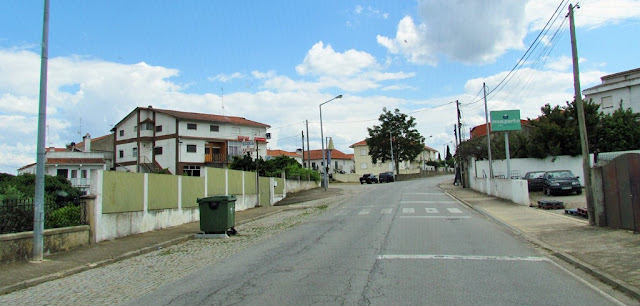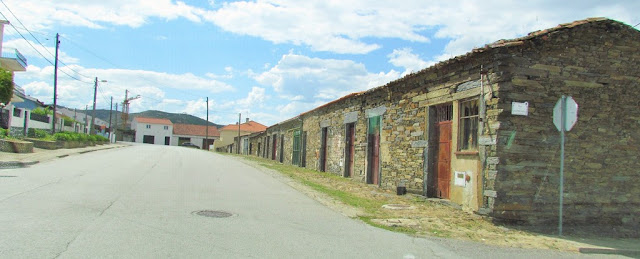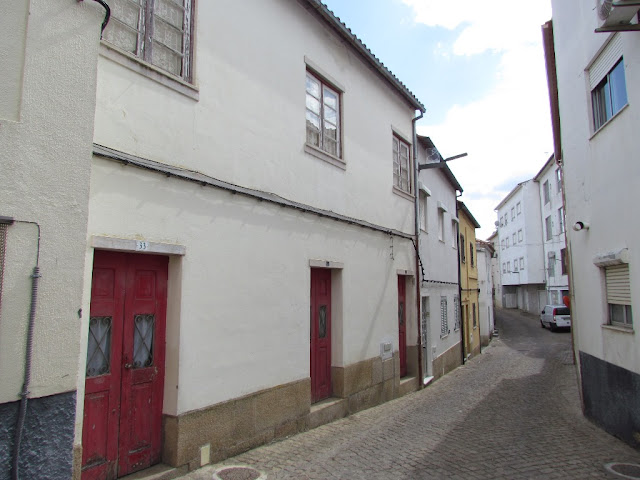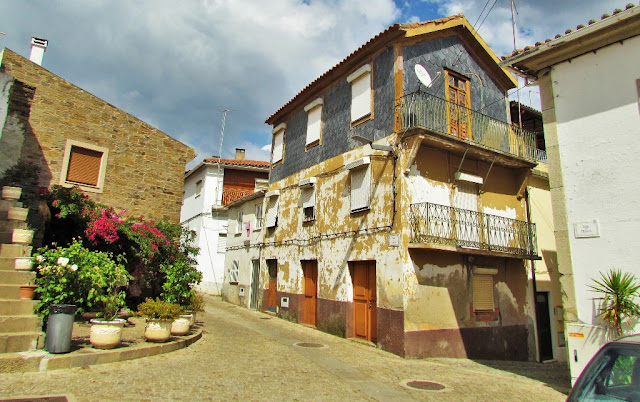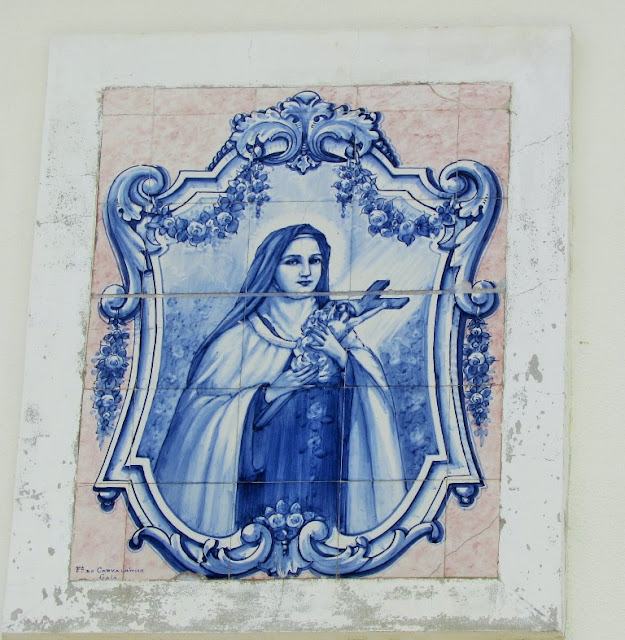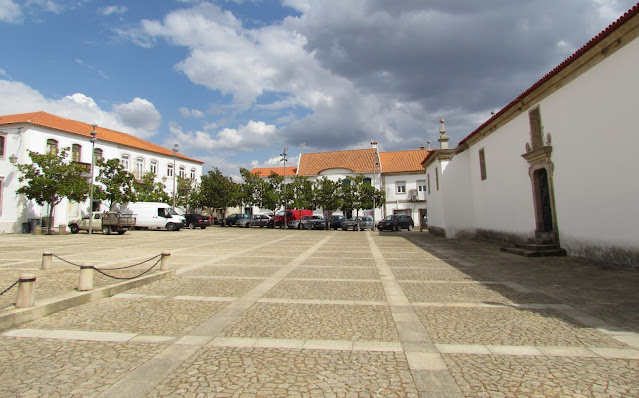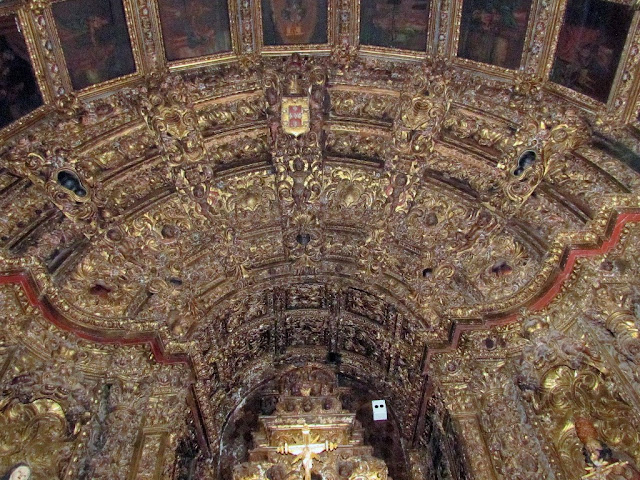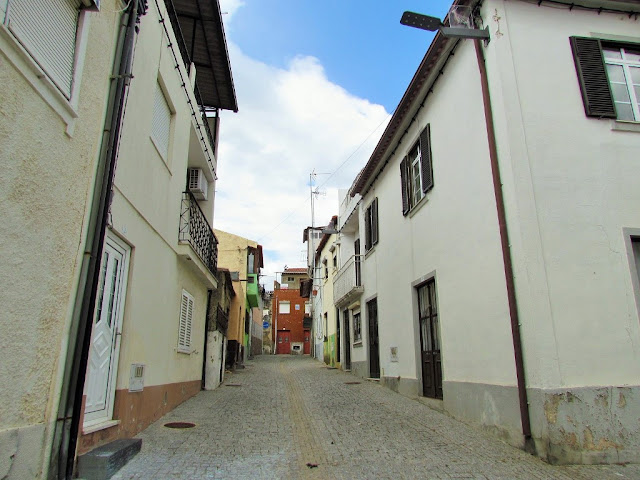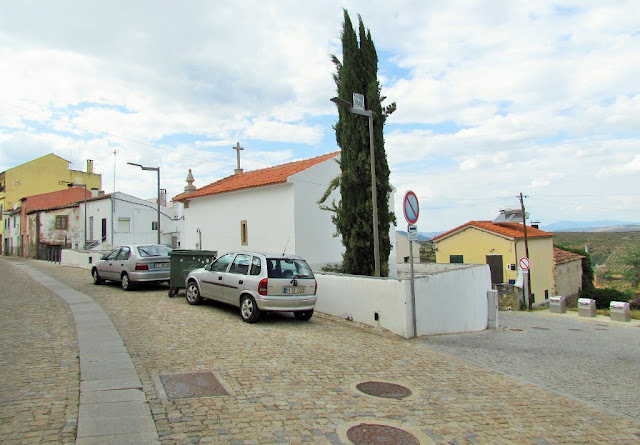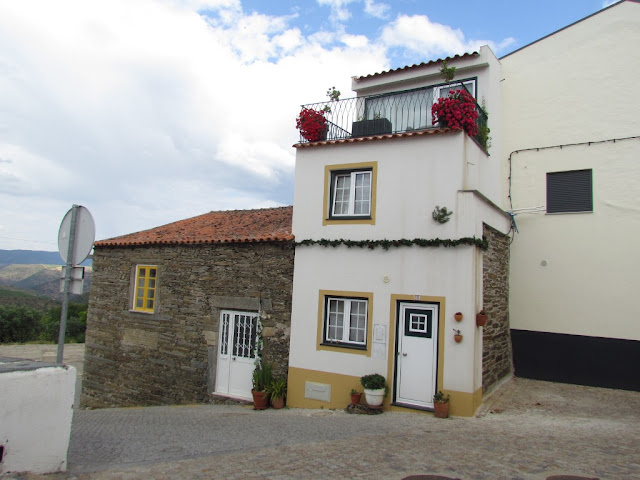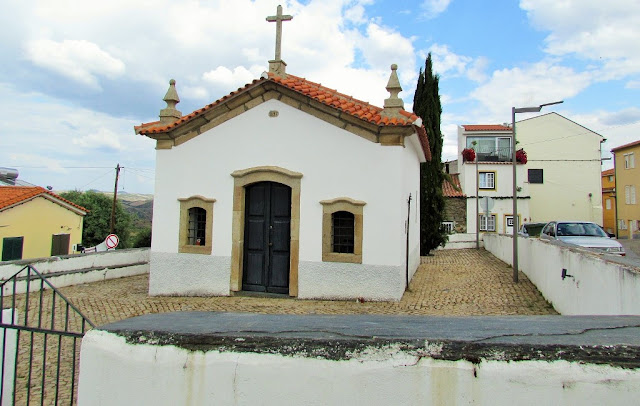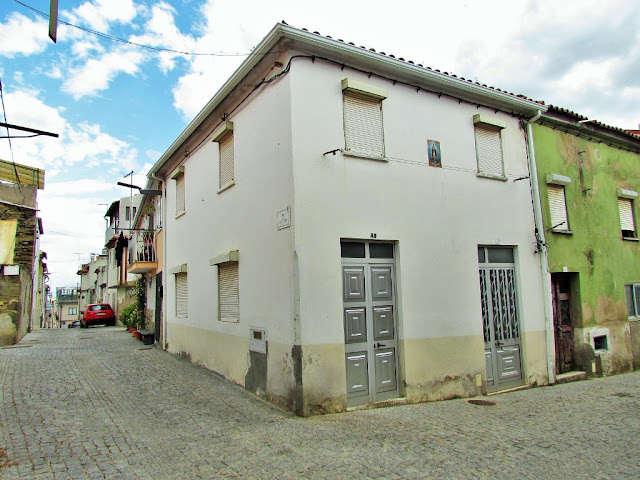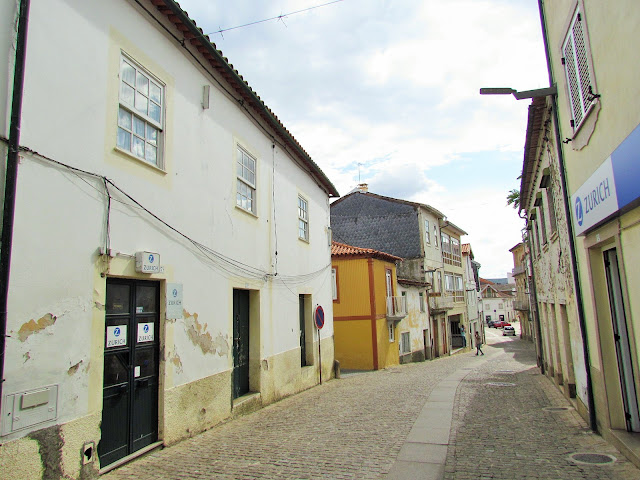VILA NOVA DE FOZ CÔA
41° 05′ 02″ N, 7° 12′ 04″ W
It is the seat of the municipality of Vila Nova de Foz Côa, with a total area of 398.15 km2, 6,304 inhabitants in 2021 and a population density of 16 inhabitants per km2, subdivided into 14 parishes. The municipality is limited to the north by the municipalities of Carrazeda de Ansiães and Torre de Moncorvo, to the northeast by Freixo de Espada à Cinta, to the southeast by Figueira de Castelo Rodrigo and Pinhel, to the south by Mêda and to the west by Penedono and São João da Pesqueira .
The municipality of Vila Nova de Foz Côa is divided into 14 parishes:
Almendra
Castelo Melhor
Cedovim
Chãs
Custóias
Freixo de Numão
Horta
Muxagata
Numão
Santa Comba
Sebadelhe
Seixas
Touça
Vila Nova de Foz Côa
Attached Parishes
Mós, by Vila Nova de Foz Côa
Murça, by Freixo de Numão
Santo Amaro, by Vila Nova de Foz Côa
Attached Villages
Arnozelo, Numão
Cortes da Veiga, Vila Nova de Foz Côa
Orgal, Castelo Melhor
Pocinho, Vila Nova de Foz Côa
Sequeira, Horta
Tomadias, Santa Comba
History
In its roots, Vila Nova de Foz Côa finds the Paleolithic man who, with modest artefacts, creased in the hardness of the schist ambitions and projects of his spiritual and material universe, making this sanctuary the largest open-air rock art museum, today World Heritage Site. Humanity.
The traces of human occupation, more or less intense, extend through Castro and Roman times. The scarce testimonies of the Suevi-Visigothic and Arab period guarantee, however, the continuity of the population centres. Contradicting the vicissitudes typical of border lands in these parts, community life proved to be regular and continuous, from the 10th century onwards.
In monumental terms, it is the 18th century that stands out, with the so-called Casa do Campos or Campinhos and the Igreja Matriz dating from this period. At that time, Mós already had a population of 317 inhabitants.
At the beginning of the 19th century, Mós suffered the entry of Napoleonic troops, after they had occupied Freixo de Numão on January 26, 1811. The population, unable to resist, abandoned the village, taking refuge in the hills near Janvâo, with the exception of the parish priest P .António de Almeida. The fratricidal struggles between liberals and absolutists did not spare the Mós either, who saw the soldier Bernardo António Rolo and later José Polido killed in the operations of the siege of Porto, assassinated by Marçais supporters.
The population growth seen between the 19th and 20th centuries is certainly due to the Douro railway line, the construction of the Freixo station and the great occupation given to the residents of Mós by the Portuguese Railways.
The entire bank of the Douro, in the middle of Mós, was the scene of great bustle during the Roman occupation, because the sands contained a lot of gold. It was the race to extract “alluvial gold”! However, in 1758, in the aforementioned inquiry, the abbot of Mós ended with the following description: "I thought that 30 to 40 years ago some strange men arrived with instruments from bowls and took sand from the river and then purified it and They put them in taleigas and they said it was gold what they took!" Today, with the river stopped by the reservoirs of the dams, no one will dare to purify the sands in search of gold!
Economy
In the economic aspect, it is necessary to emphasize the almost dependence on agriculture, with emphasis on the cultivation of vines, almond trees, olive trees and even fig trees, orange trees and horticulture in general.
Tourism
The great potential of this city, along with the 14 parishes, is to be able to provide different tourist offers.
Engravings and Archaeological Park
The Côa Valley Archaeological Park is considered one of the most important rock art sites in the world and is the most important site with open-air Paleolithic rock art. Five dozen art centers were identified here, along the last 17 kilometers of the Côa River, up to its confluence with the Douro. These nuclei present Paleoengravings of Rock Art dating, mostly, from the Upper Paleolithic (more than 10,000 before the present) but the valley also kept examples of paintings and engravings from the Neolithic and Chalcolithic, engravings from the Iron Age and from the 17th, 18th centuries , 19th and 20th centuries, when the millers, the last engravers of the Côa, left the bottom of the valley.”
Museum of Art and Archeology of the Côa Valley
The Côa Museum is the second largest museum (in area) in Portugal, after Ancient Art in Lisbon.
Railroad
The Linha do Douro is a railway line in Portugal that connected Porto to Barca d'Alva, with a length of 200 kilometres. The line, for most of its route, follows the banks of the Douro River, containing the longest stretch of water-lined railway in Portugal, even surpassing the large riverside section of the Beira Baixa Line (along the Tagus River). The line is closed on the section between Pocinho and Barca d'Alva. Today the Douro line is only active for rail traffic on the Porto-Pocinho section.
Pocinho river pier
The Pocinho river pier is used without taking advantage of any kind of tourist income for profit or otherwise. As an organized use, it receives visits from canoeists, especially Russians, with training for competitions, as the reservoir of the Pocinho dam allows for a great track/course for intensive training.
Vessel "Senhora da Veiga"
The municipality of Vila Nova de Foz Côa organizes trips along the Douro River on the Rabelo boat “Senhora da Veiga”. This vessel, owned by the Municipality, is being operated by the Municipal Company Fozcoainvest, Energia, Turismo e Serviços, E.M., and has the capacity to transport 70 people.
The tours are carried out along the Douro River between the city of Peso da Régua and Barca d'Alva.
Built historical heritage
Main article: List of built heritage in Vila Nova de Foz Coa
The built heritage of Vila Nova de Foz Côa is also an important tourist attraction. The municipality has historic villages that were once the seat of the municipality, such as Freixo de Numão, Almendra and Castelo Melhor, given their importance on the border in the defense of the territory. In the municipality there are, in addition to the villages, all of them old and traditional, countless palaces, manor houses, pillories, all testimonies of a history that “passed by there” that “was made there”, over the nine centuries of nationality .
Côa Valley Rock Art Sites
The Côa Valley rock art sites are located along the banks of the Côa River, mainly in the municipality of Vila Nova de Foz Côa. They form a rare concentration of rock art composed of stone engravings dating from the Upper Paleolithic, constituting the oldest record of human engraving activity in the world.
Vila Nova de Foz Côa is known for the complex of open-air rock carvings in the Côa River valley, one of the largest archaeological centers of rock art in Europe.
NEW PHOTOS TAKEN IN 2023
CÔA WALKWAYS
These walkways make the connection between the Côa Museum and the disused train station, close to the Côa River, but already facing the Douro.
There are 890 steps for a difference in level of 160 meters, from where you can see a landscape marked by rugged slopes and terraces and countless plant and animal species, some of them protected.
An absolutely overwhelming landscape, the Douro in its harshest purity. You will see that this is an unforgettable tour.
CÔA AND DOURO, WORLD HERITAGE
The route requires some breath when done uphill (it takes an average time of 45 minutes and is of high difficulty), but the stops allow the contemplation of an extraordinary territory, which makes the encounter between the Prehistoric Art of the Côa Valley and the landscape of Alto Douro Vinhateiro, both classified as World Heritage by UNESCO.
In addition to the famous rock carvings (about 30,000 years old), you can also see the traditional dovecotes (of great architectural and ecological importance) or the Douro line, the most beautiful railway section in the country and a true engineering marvel. .
If you decide to take the fantastic route of these walkways, you should take comfortable clothes and shoes and water, because despite being a relatively short route, it is a hot area and the ascent requires some effort. You should not collect plants or rock samples, let alone litter, fig trees or smoke.
When you arrive, the car park is located on the upper floor of the Côa Museum, and access to the walkways is via the lower part of the building (in the area next to the bar-restaurant) or down the outer slope to the left.
CÔA ARCHAEOLOGICAL PARK
The Côa Valley Archaeological Park's mission is to manage and protect all of its vast heritage. In addition to developing research on the national interest generated, it also has the mission of showing the public rock art.
Patrimony
The artistic manifestations present in the Côa Valley Archaeological Park make it a unique space in the world. There are several moments in history, with some engravings dating back 30,000 years. All gathered in a park and made available to the public.
Having this Park, according to its institutional information, “the most important set of open-air Palaeolithic figures known to date”, it is essential to protect this important heritage and recognize the key role of this discovery (20th century).
Previously, it was argued that cave painting was confined to the subterranean world of caves. However, it is now assumed that these demonstrations were held in the open air. However, in the caves, there were other conditions that allowed cave painting to reach our days.
There are numerous reasons why other testimonies of rock motifs have not come down to us, including time – which subjected the painting to millennia of rain and sun that gradually wore it down -; erosive agents and even human activity itself.
Rock painting
The rupestrian motifs are located both in schist rocks (mostly) and on granite, and in the Archaeological Park of Vale do Côa it is possible to find both engravings and cave paintings.
However, given the quantity of both typologies, it would be more appropriate to emphasize the cave engravings, which are in much greater quantity than the paintings. Another relevant piece of information is that there is no cave art in the Côa Valley.
Excellent conditions
Only the Côa Museum is a work of art that deserves a long visit. The space allows to know the theme of engravings and cave paintings.
Being one of the largest Portuguese museums, it was inaugurated on July 30, 2010.
Useful information
The opening hours of the Côa Museum and Visit Scheduling (MV) to the Rock Art Sites have some variants.
Between the months of October and February, both open at 9:00 am and close at 5:30 pm.
From March to May, the Museum opens from 9:30 am to 6:00 pm and the MV is open from 9:30 am to 12:00 pm and from 1:30 pm to 6:00 pm.
Closing days
The Côa Park and Museum is closed on the following days:
January, 1st.
1st May.
December 25th.
Mondays from November 1st to March 31st.
Note: On Easter Sunday there are no visits to the rock art sites in the Park.
💓💓💓💓💓
SEARCH IN ALPHABETICAL ORDER
IN THE DISTRICT OF GUARDA

Aguiar da Beira;
Almeida;
Almendra;
Castelo Bom;
Castelo Melhor;
Castelo Rodrigo;
Celorico da Beira;
Figueira de Castelo Rodrigo;
Fornos de Algodres;
Freixo de Numão;
Golfar + A-do-Cavalo;
Almeida;
Almendra;
Castelo Bom;
Castelo Melhor;
Castelo Rodrigo;
Celorico da Beira;
Figueira de Castelo Rodrigo;
Fornos de Algodres;
Freixo de Numão;
Golfar + A-do-Cavalo;
Moreira de Rei (Trancoso);
Numão;
Pinhel;
Ranhados;
Sabugal;
Seia;
Serra da Estrela Nature Park;
Sortelha;
Trancoso;
Valhelhas;
Vila Nova de Foz Côa;
Vilar Formoso;
Numão;
Pinhel;
Ranhados;
Sabugal;
Seia;
Serra da Estrela Nature Park;
Sortelha;
Trancoso;
Valhelhas;
Vila Nova de Foz Côa;
Vilar Formoso;
💓💓💓💓💓
Return to mainland Portugal &
the Azores and Madeira islands

















